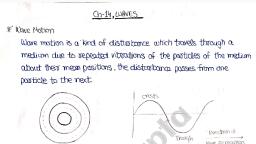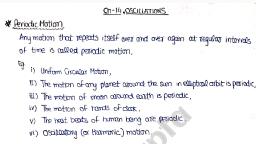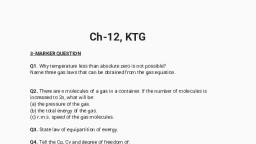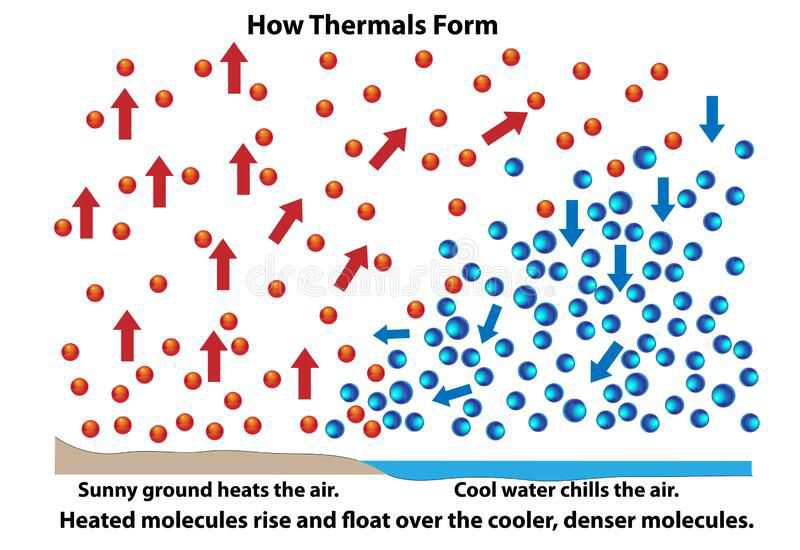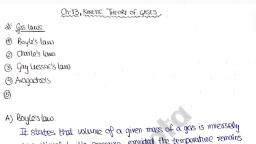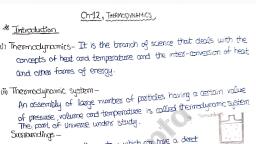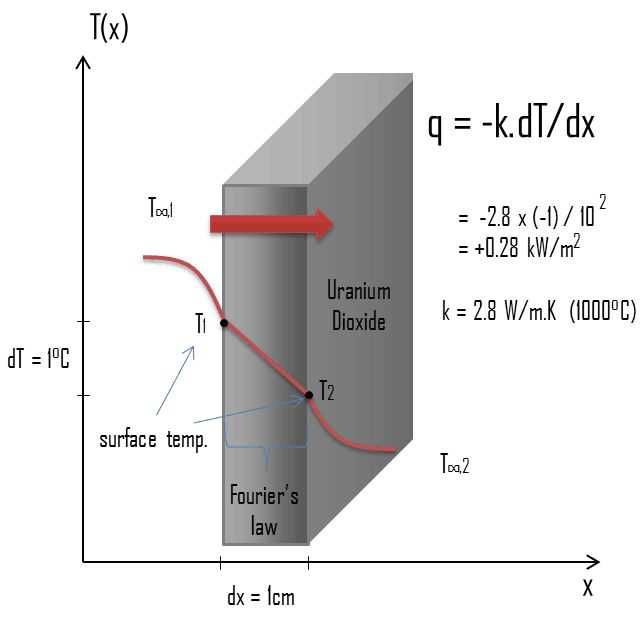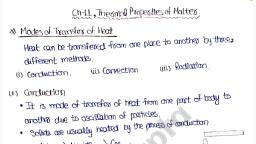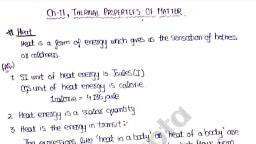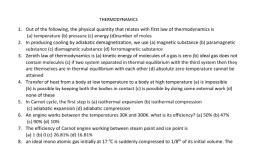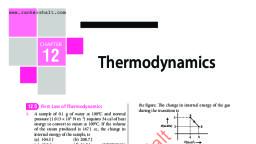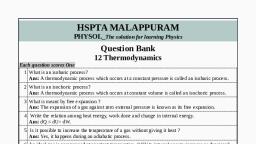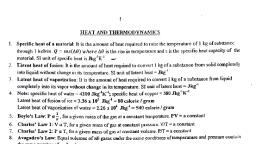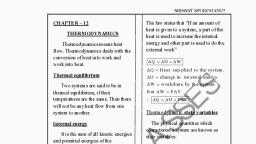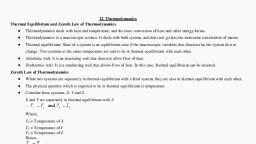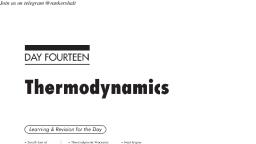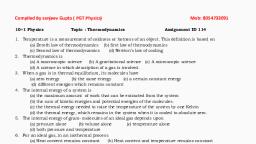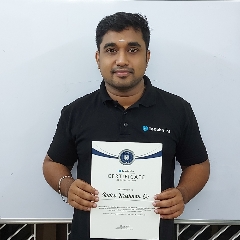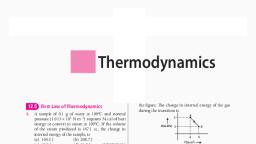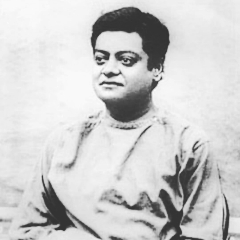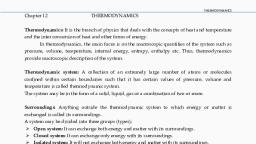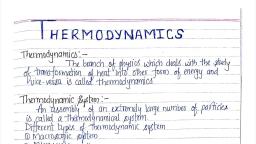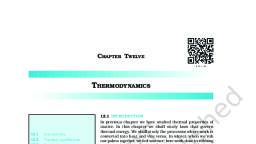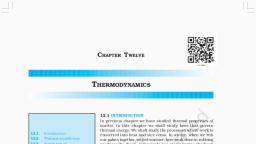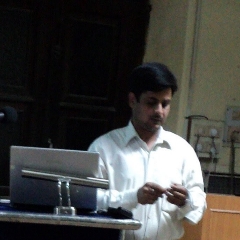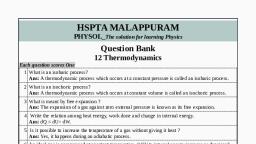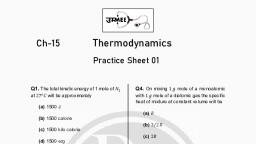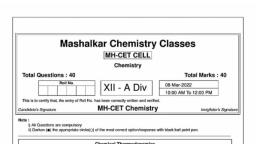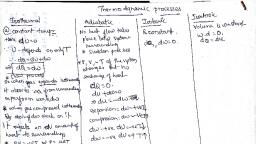Page 1 :
SHORT ANSWER TYPE(2marker), , Q1. Does the internal energy of an ideal gas change in:, (a) an isothermal! process?, , (b) an adiabatic process?, , What is the amount of work done in a cyclic process?, , Q2. Can the temperature of an isolated system change?, or, , Q2. What is the nature of the P — V diagram for isobaric and isochoric Processes?, , Q3. State, first law of thermodynamics, second law of thermodynamics, & third law of, thermodynamics,, , Q4. (I) Define an adiabatic process., (Il) Define an isothermal process., (lil) Define an isotherm., , QS .Name and Define the types of therrnodynamic state variables., , Q6. Two identical samples of gas are expanded so that the volume is increased to twice, the initial volume. However, sample number 1 is expanded isothermally while sample, number 2 is expanded adiabatically. in which sample is the pressure greater? Why?, , Q7. Explain why two isothermal curves cannot intersect each other?, Q8. State the conditions for reversible and irreversible processes., Q9. Why C, is greater than C, for a gas?, , intermediate Answer type (3marker), , Q10. Derive the expression for the work done during:, , (a) Isothermal process, (b) Adiabatic process, , Q11. A gas is suddenly compressed to 1/3 of its original volume. Calculate the rise in, temperature, the original ternperature being 300K and y = 1.5.
Page 2 :
LONG ANSWER TYPE(4marker), , Q12. A certain volume of dry air at NTP ts allowed to expand 4 times its original volume under, {a) isothermai conditions, , (b) adiabatic conditions., , Caiculate the final pressure and temperature in each case y = 1.4., , Qi3. A liter of hydrogen at 27°G and 106 dyne cm: pressure expands isothermally until, its volume ts doubled and then adiabatically until redoubledi’Find the final temperature,, pressure and work done in each case, y = 1.4, , Q14. Two moles of He gas (y = $3) J are initially at temperature 27°C and occupy a, volume of 20 liters. The gas is first expanded at constant pressure until the volume is, coubled. Then it undergoes an adiabatic change until the temperature returns to its, initial value, , (a) Sketch the process onaP-V diagram., , (b) What are the final volume and pressure of the gas?, , {c} What is the work done by the gas?, , Q15. The specific heat capacity of water is 4200 J/kg K. What is the change In the, intemal energy of 5 kg of water when it is heated from 20°G to 80°C?, , Q16. The specific heat of argon at constant pressure is 0.125 cal/gm and at constant, volume is 0.075 cal q'. Calculate the density of argon at N.T.P., J= 4.18 10 ergs ca: and normai pressure = 1.01 x 106 dynes cm., , Q17. One gram of water at 373 K is converted into steam at the same temperature., Volume of 1 c.c. of water becomes 1671 cm: on boiling. Calculate the change in internal, , energy of the system if heat of vaporization is 540 cal g’. Atmospheric pressure is, 1.013 x 105 Nm?, , Q18. A diatomic gas is heated at Constant pressure. What fraction of the heat energy is, used to increase the internat energy?


